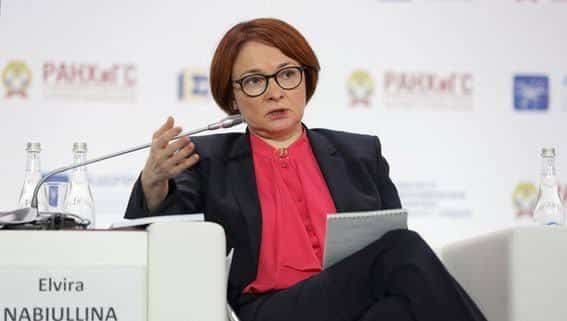The BIT Journal reveals significant news regarding the future of Russia’s financial landscape with digital ruble. Elvira Nabiullina, the governor of the Bank of Russia, announced that, Russia’s central bank digital currency (CBDC), is anticipated to achieve widespread acceptance among Russian citizens in the next five to seven years. This new development promises to revolutionize the way transactions are conducted in Russia, providing substantial benefits for both individuals and businesses.

Elvira Nabiullina is Optimistic for Future
Speaking at the Federation Council, the Russian counterpart to the U.S. Senate, Elvira Nabiullina shared her optimistic outlook for the ruble’s future.
“The digital ruble will gradually, within five to seven years, become a familiar part of our lives,” Nabiullina stated. This prediction is grounded in the practical advantages that the digital ruble offers over traditional payment methods.
One of the primary benefits highlighted by Nabiullina is the cost-effectiveness . For citizens, it allows for free transfers, making it an attractive option for everyday transactions. For businesses, the ruble promises significantly lower commission fees compared to those charged by credit card companies.
“There are clear advantages for people to use the digital ruble. These are free transfers for citizens and commissions for businesses that are several times lower than for cards,” Nabiullina emphasized. These advantages are expected to drive the digital ruble’s adoption across various sectors.
Digital Ruble: Accelerated Integration Plans
The ruble is currently in an advanced pilot phase, but its integration into the Russian economy may happen sooner than initially expected. President Vladimir Putin has recently called for an expedited the rollout, urging for a transition to full-scale implementation.

He stated, “Take the next step, namely to move to a broader, full-scale implementation of the digital ruble in the economy, in economic activity and in the field of finance.”
This push from President Putin has led to swift legislative action. The State Duma has given preliminary approval for regulations that will allow the use of cryptocurrencies, including the ruble, for international payments starting in September. This regulatory framework is crucial for the ruble’s success and demonstrates the government’s commitment to embracing digital financial innovations.
Nabiullina Predicts Natural Adoption of Digital Ruble
Nabiullina has consistently predicted that the adoption of the ruble will be a natural and voluntary process. Her earlier statements in April reiterated that the currency would gain traction within five to seven years. This timeline reflects the governor’s confidence in the ruble’s potential to become an integral part of Russia’s financial system.
The BIT Journal reports that the digital ruble offers several advantages that are expected to drive its adoption. For citizens, the ability to make free transfers is a significant benefit, simplifying daily transactions and reducing costs. For businesses, the lower commission rates compared to traditional card payments make the ruble a cost-effective alternative.
Nabiullina’s remarks highlight the digital ruble’s potential to streamline financial transactions and reduce costs for all users. These benefits could play a pivotal role in persuading both individuals and enterprises to transition to the ruble.
The pilot phase indicates that substantial progress has already been made. With the recent regulatory developments and President Putin’s directive for faster integration, the foundation is set for the ruble’s rapid adoption.

The BIT Journal concludes that the digital ruble is poised to bring a new era of financial innovation to Russia. With Elvira Nabiullina’s predictions and President Putin’s support, the ruble is expected to see widespread acceptance within the next five to seven years. The benefits of free transfers for citizens and lower commissions for businesses underscore its potential to revolutionize financial transactions. As the digital ruble continues to gain traction, The BIT Journal will provide ongoing coverage of its impact on the Russian economy and beyond.





























